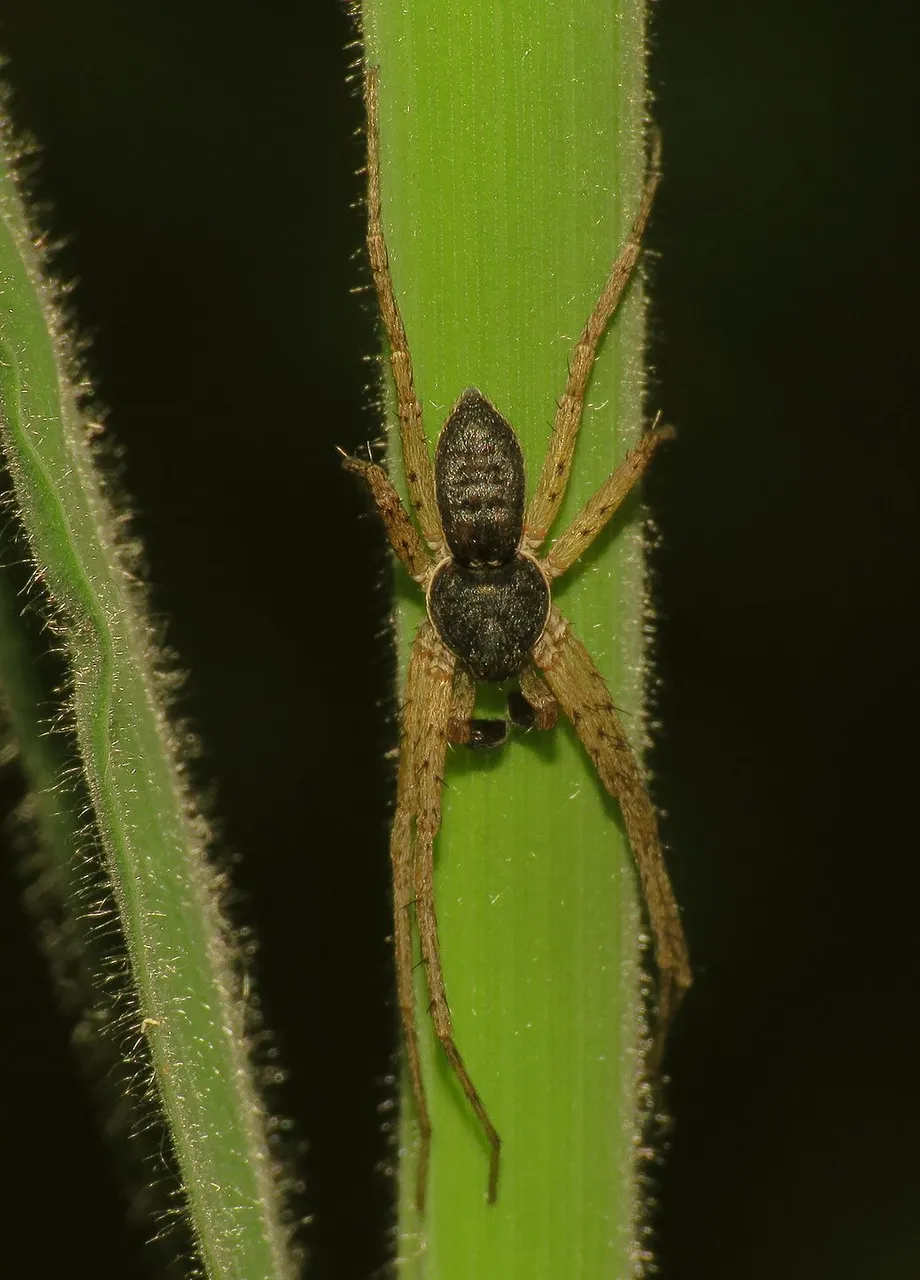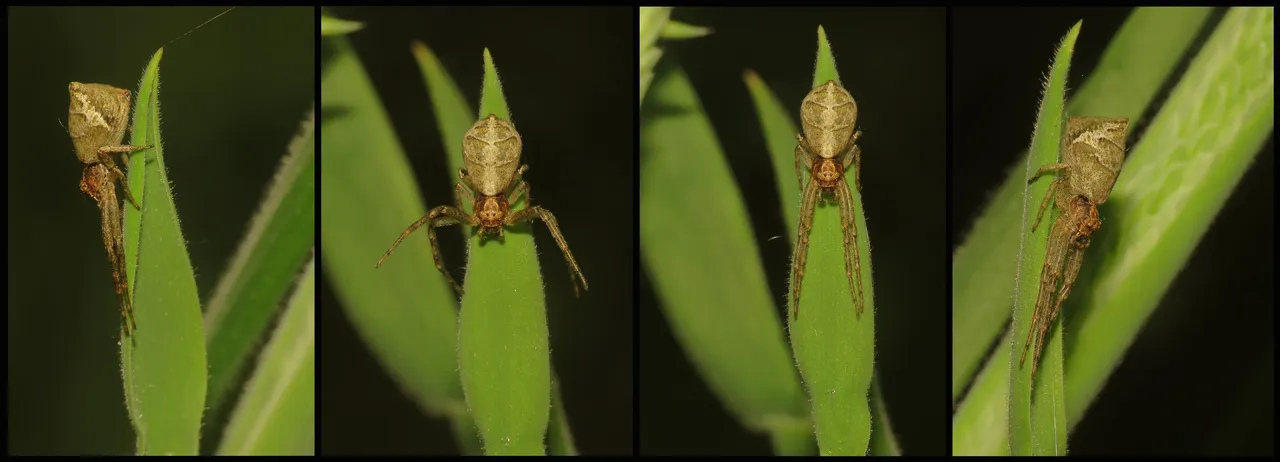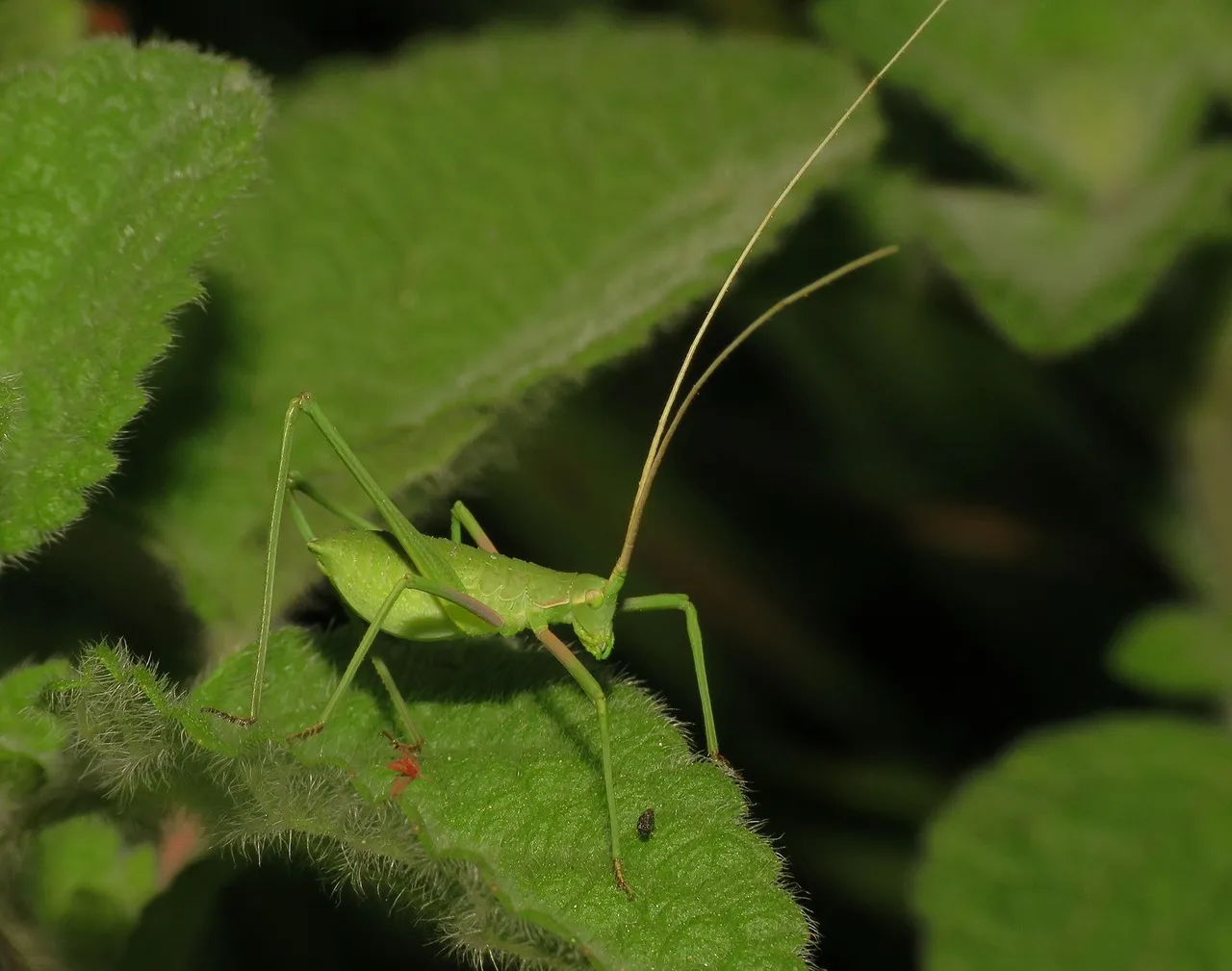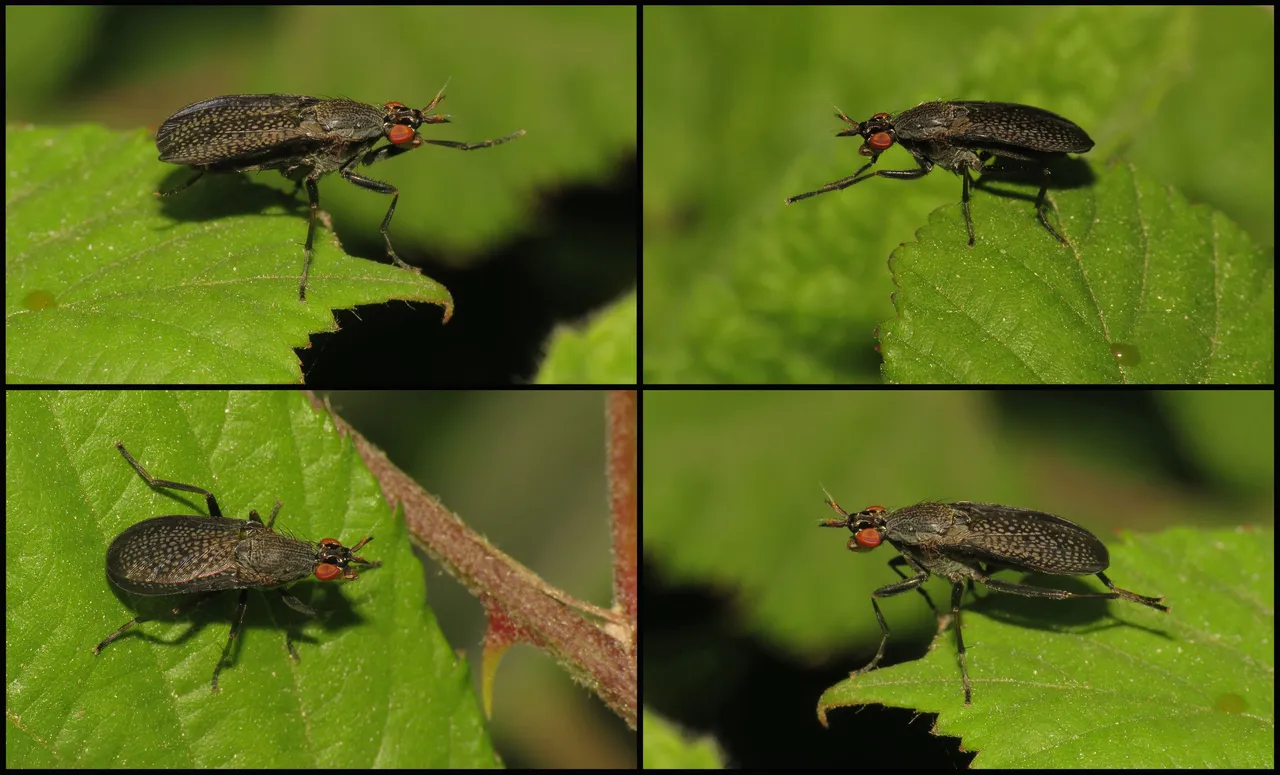It was a great day for spiders ...
... I mean, I don't know how the spider felt about that, if their day was really great ... I wanted to say that was surely a great day for photographing the spiders ... which means a great day for me :D
It started with this lovely, colorful species ...
... that I never noticed before ... and this morning I saw at least ten of these red spiders.
This is the Nigma flavescens, a Meshweb weaving spider (Dictynidae family). The color in this species, that builds mesh webs on shrubs and some robust herbaceous plants, varies from this vivid red to green and pale yellow with different darker markings.
Some minutes later, in the same area, I photographed another species that I never saw or photographed before ...
... the male Philodromus dispar, from the Philodromidae (Running Crab Spiders) family. This is a fast and agile ambush predator that doesn't build webs.
Just a few meters further ...
... on another blade of grass ...
... I found another interesting species ...
... Tmarus piger crab spider (Thomisidae family), an interestingly shaped species that I encounter regularly.
This is another ambush predators that waits for its preys camouflaged on leaves of grass or twigs of small trees and shrubs.
Nearby, the Synema globosum crab spider has caught a small ant. The morning was still humid, with dew in shady places, and the ant on the spider's fangs somehow ended up enveloped by a droplet of water.
The minuscule, very young Neoscona adianta spider from the Araneidae (Typical Orb Weavers) family ...
... was hanging on its thread above the interesting flower ...
... of the Heart-flowered Serapias orchid (Serapias cordigera) ...
... a pretty rare flower on these meadows.
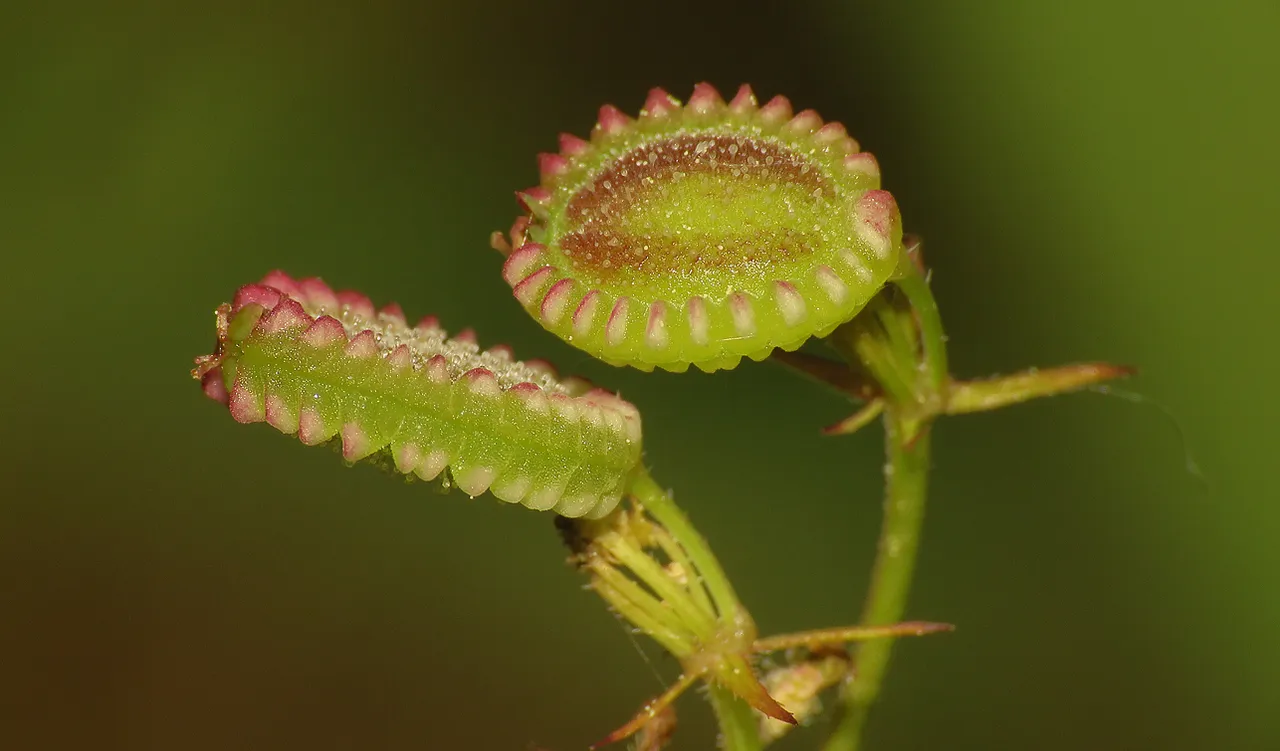
Nearby, I photographed two seeds of the Tordylium apulum, commonly known as Mediterranean hartwort, that grows in sunny open spaces, on a wide variety of different soils.
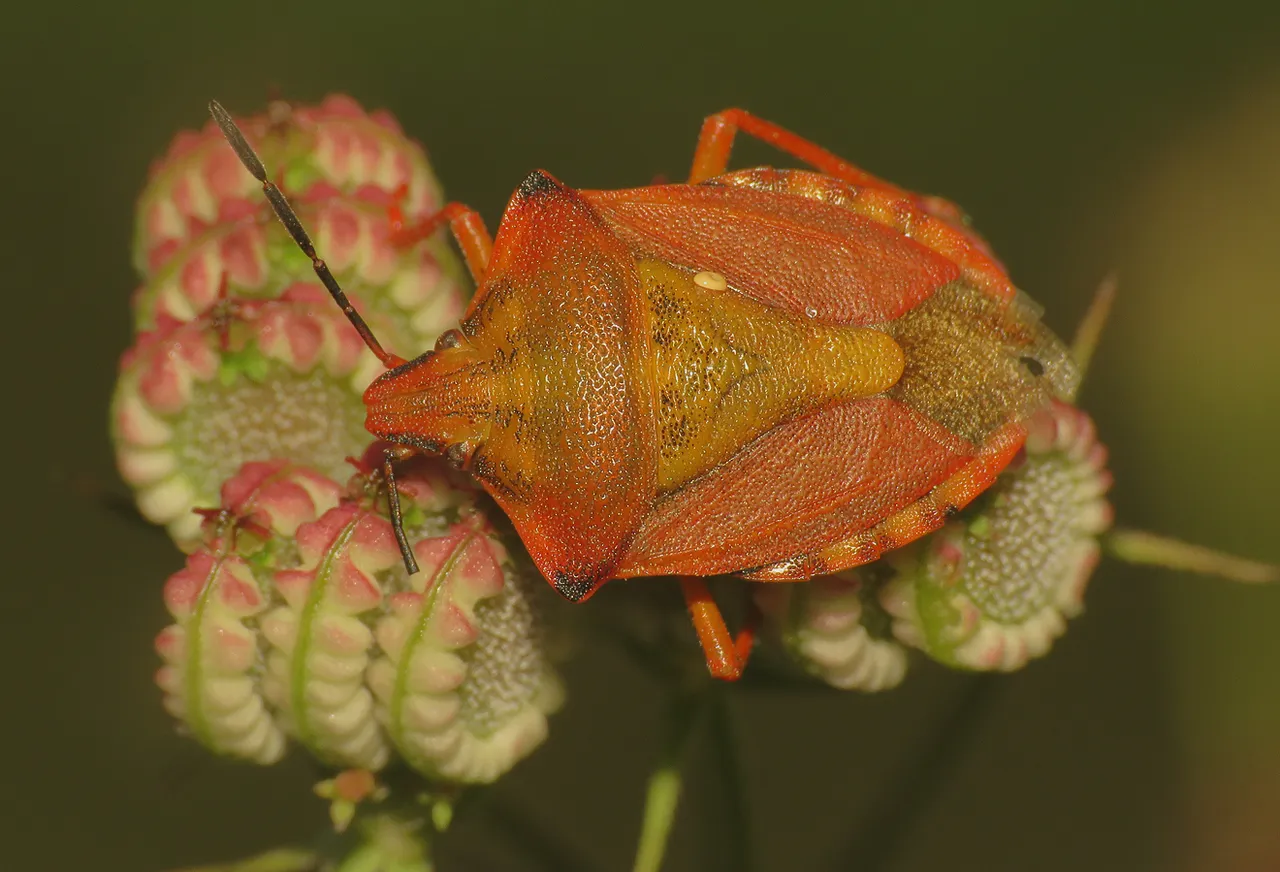
On another, bigger group of these seeds I found the colorful Carpocoris purpureipennis bug, a species that feeds on sap and nectar of various plants on the meadows.
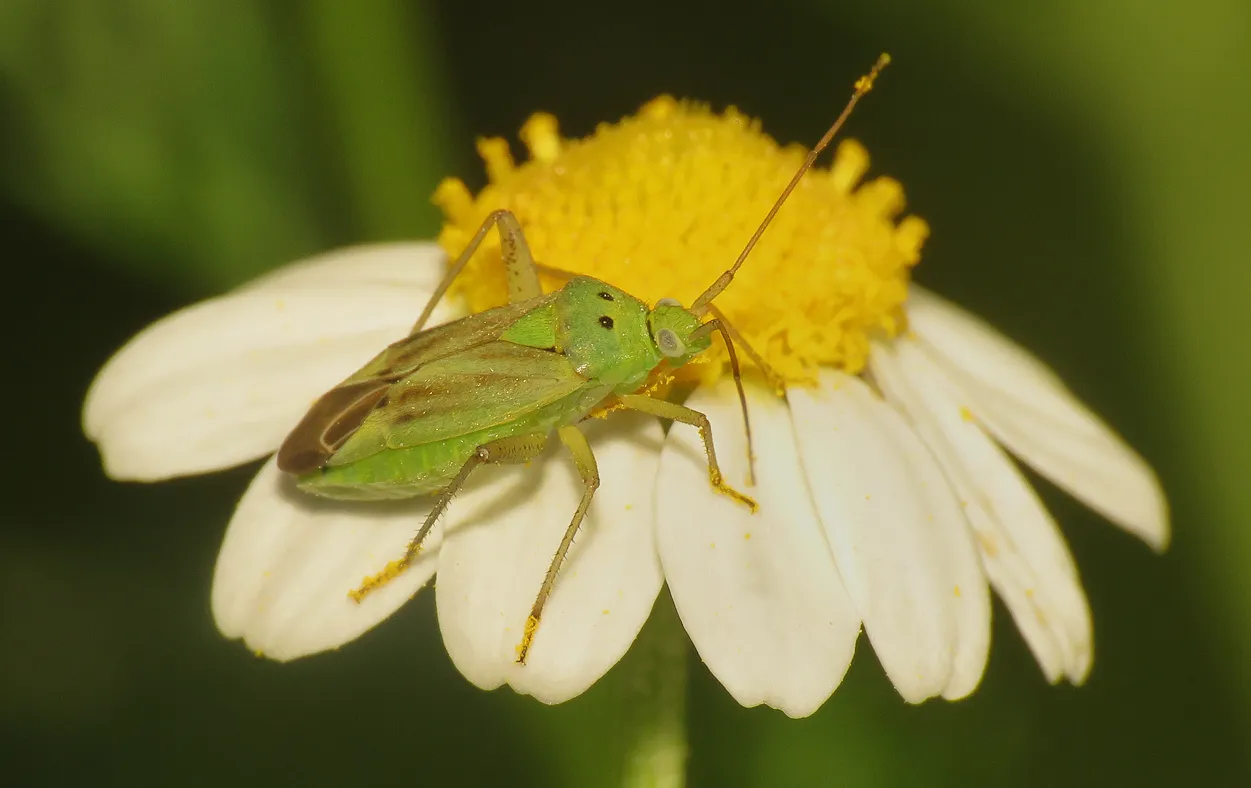
Anthemis arvensis flowers were growing all around.
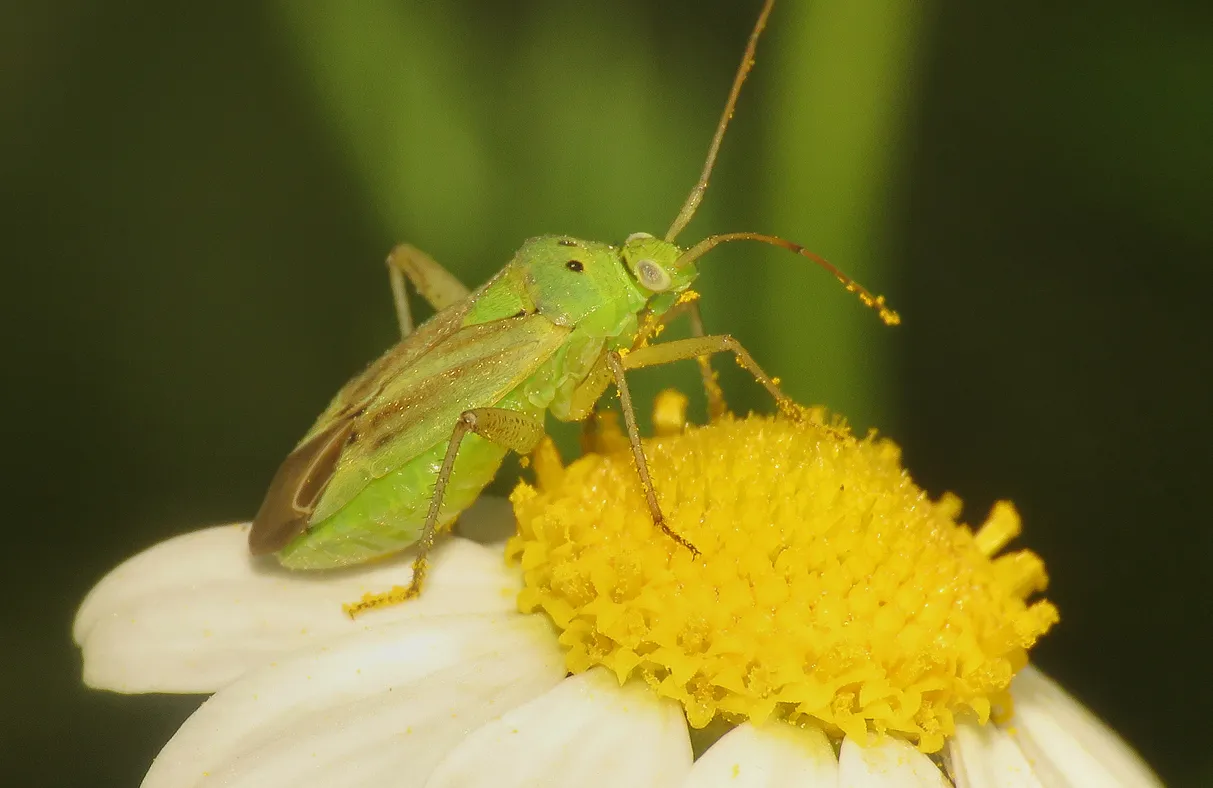
On those flowers I photographed the Closterotomus norwegicus, a bug from the Miridae family ...

... the Centricoris variegatus bug ...
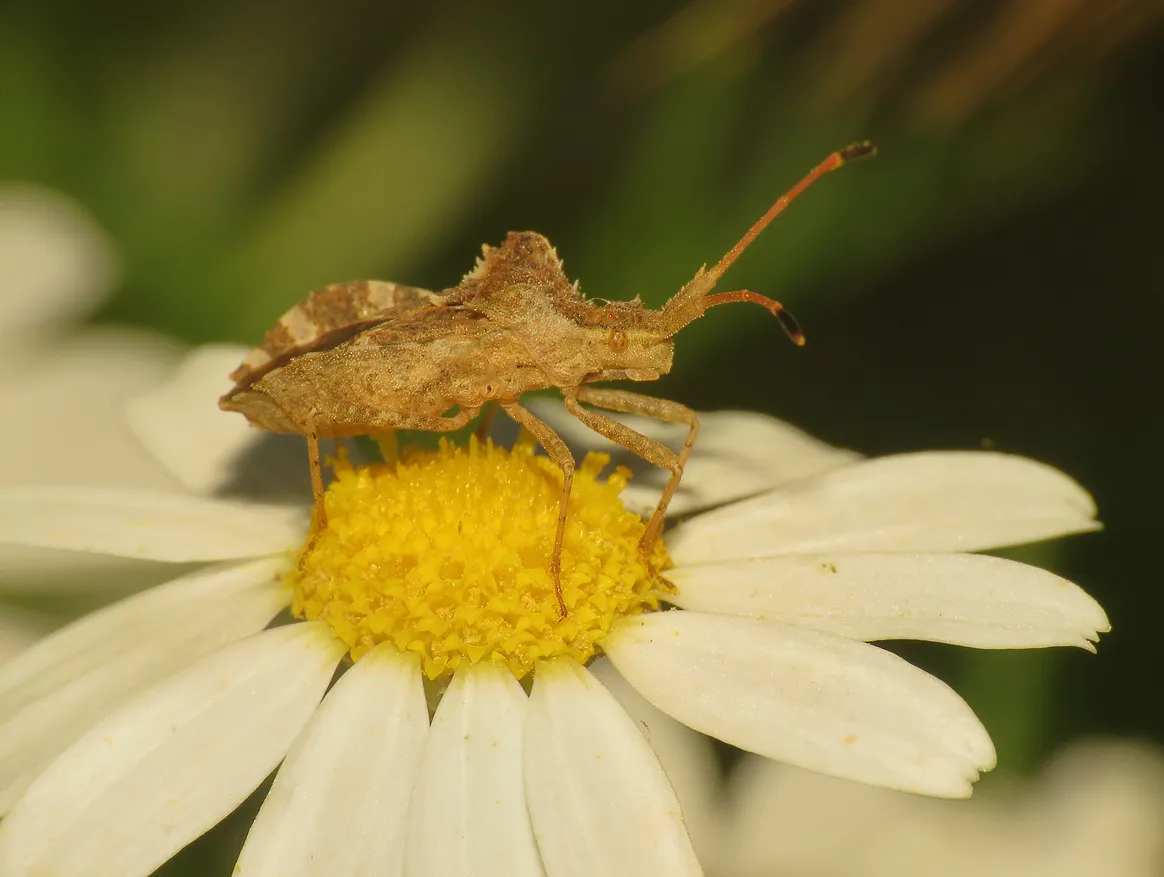
... from the Coreidae family ...
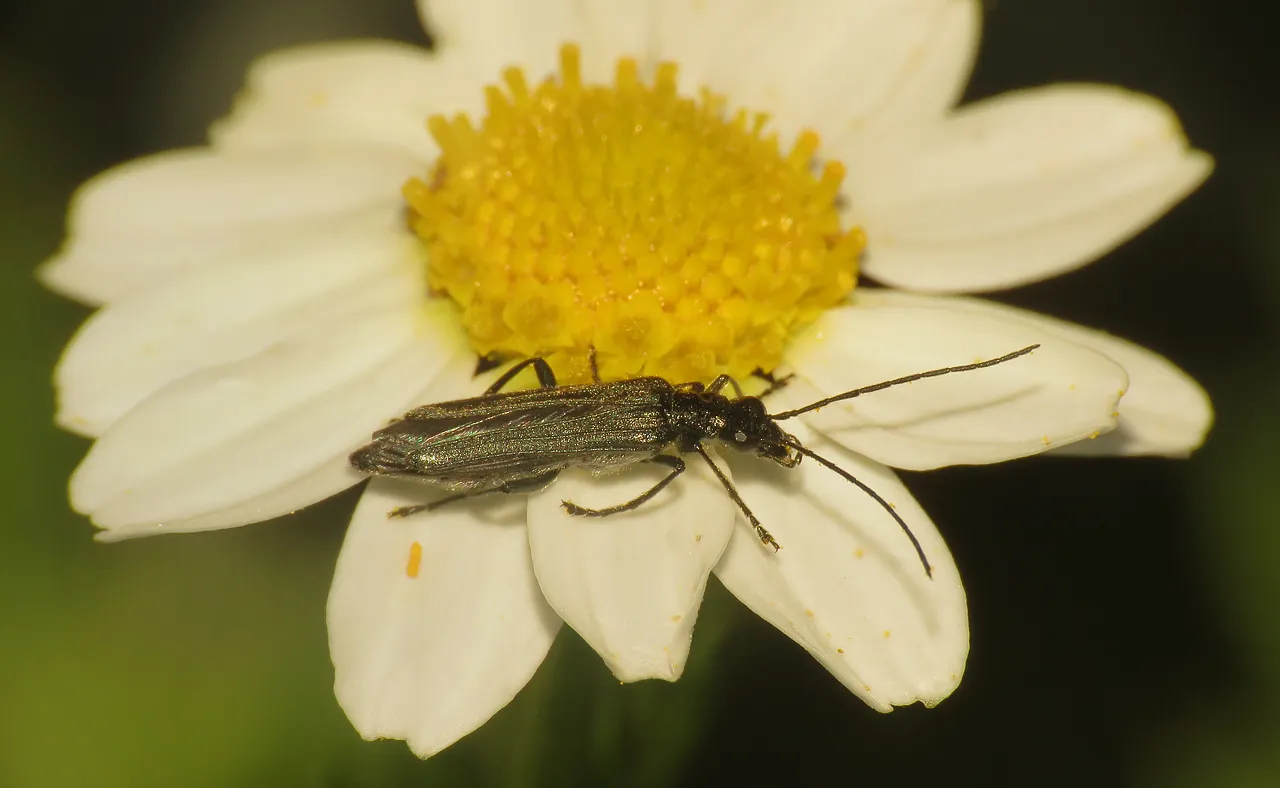
... the Oedemera lurida, a pollen & nectar eating beetle from the Oedemeridae family ... a family commonly known as "false blister beetles" ...
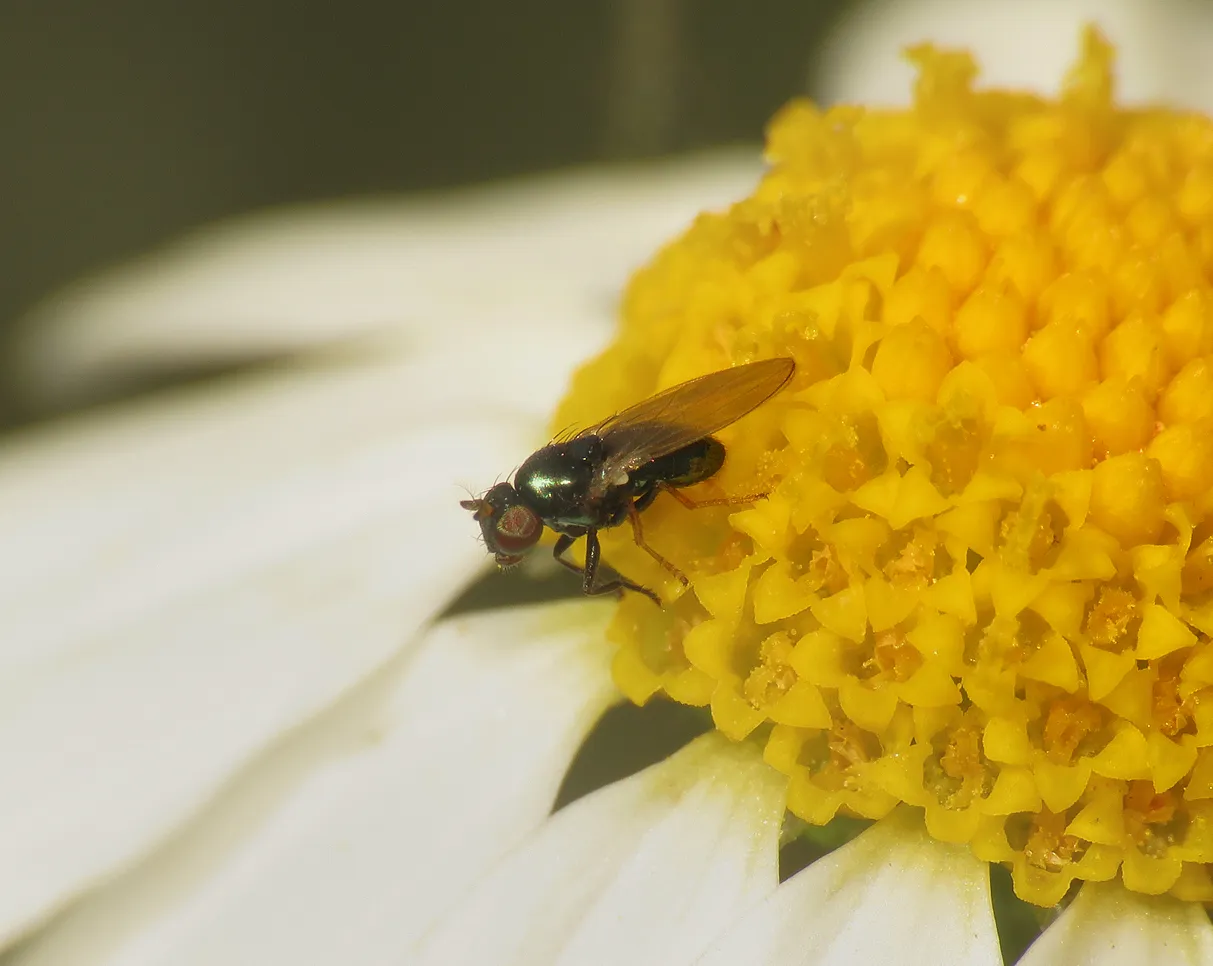
... and some minuscule, dark metallic - green fly ... probably from the Lonchaeidae (lance flies) family ... but I'm not sure ... maybe is the Lamprolonchaea smaragdi ... or not ... who knows :) I certainly don't.
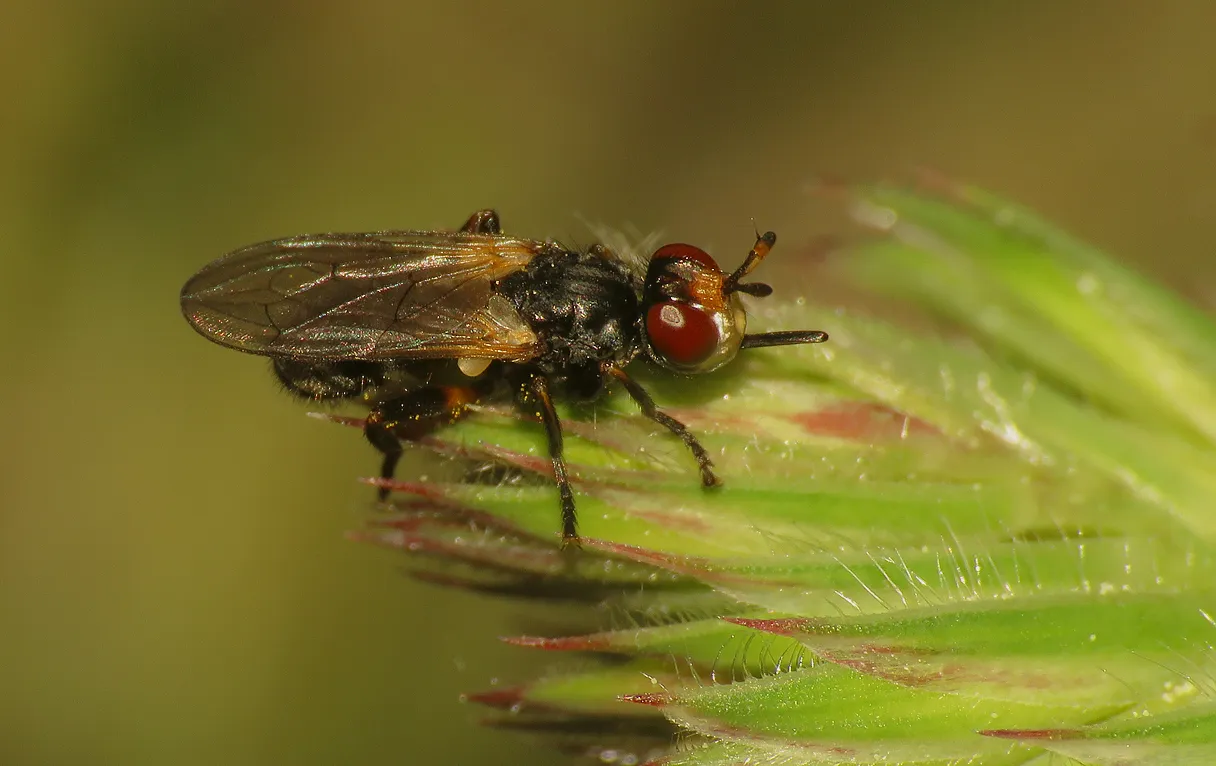
Half an hour later, on my walk through the meadow, I photographed this small fly from the Conopidae familly - the Thecophora atra ...
... and about 10 - 15 meters further, I came across another small fly, I don't know the name of the species or family, dead in a strange pose, high on the top of the grass.
This fly has been killed by a fungal disease. The parasitic fungus Entomophthora muscae has developed inside the fly's body, changed the fly's behavior, made the dying insect climb to the highest point on the plant, and now, on this enlargeable photograph, you can see the minuscule particles all over the dead fly, these are the spores ready to fall and infect other flies that are passing or resting underneath.
The Minettia fasciata fly (Lauxaniidae family) ...
... was feeding on some minuscule particles spread across some large leaf near the ground.
A few steps further ...
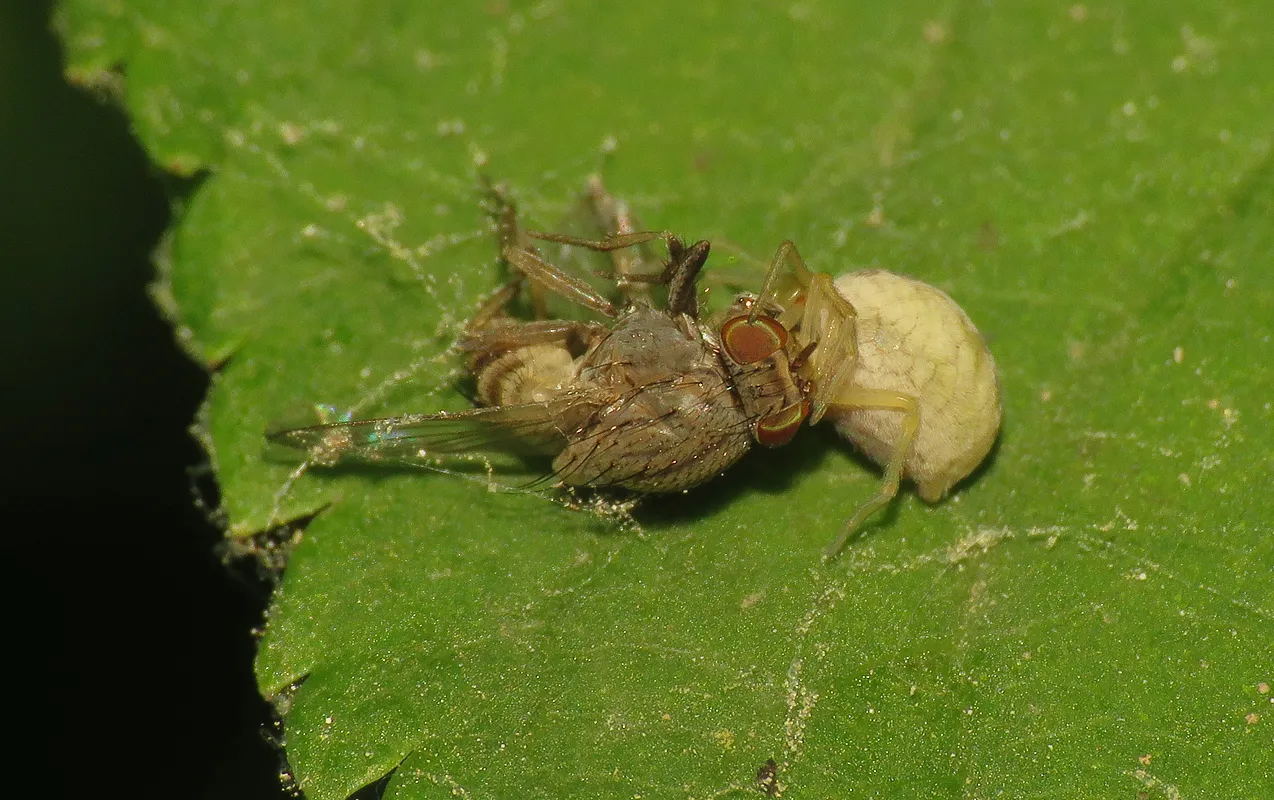
... another fly of that species ...
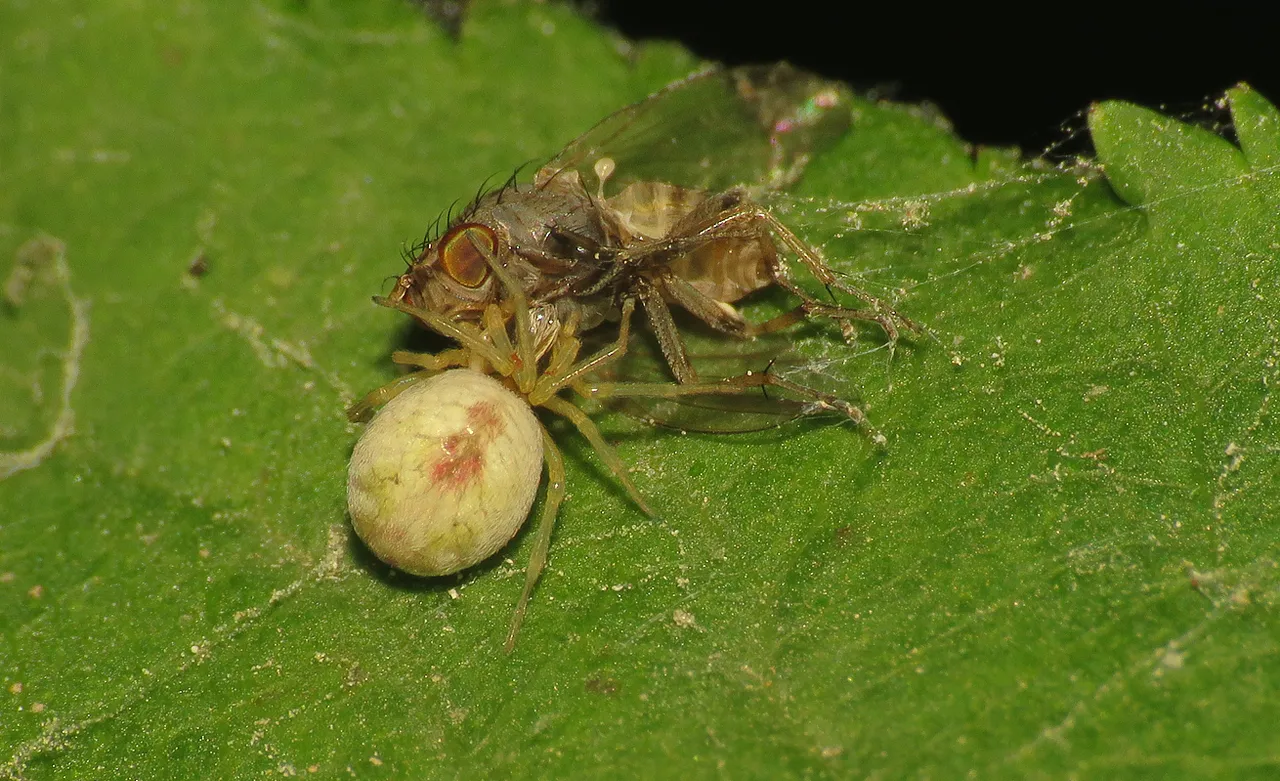
... ended up caught by a small spider.
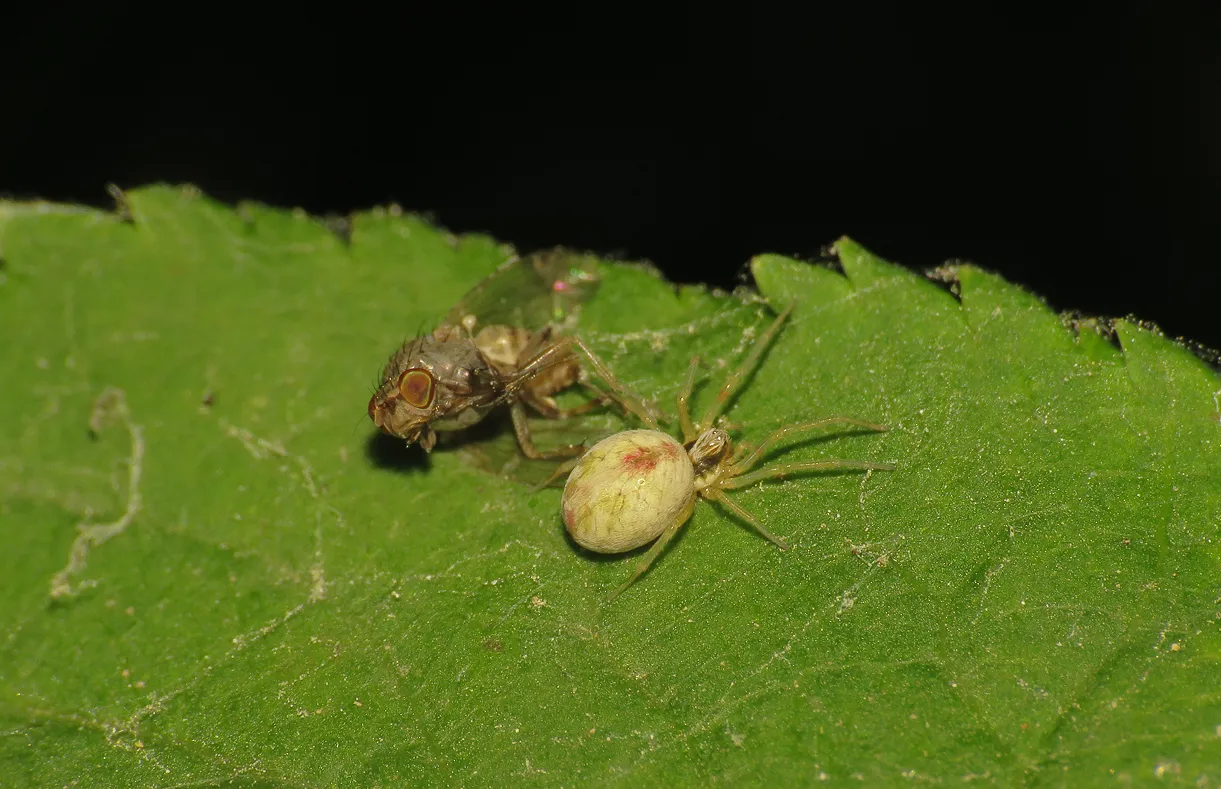
Here you can see the female of the Nigma puella, a meshweb weaving spider. After a minute or so of feeding ...
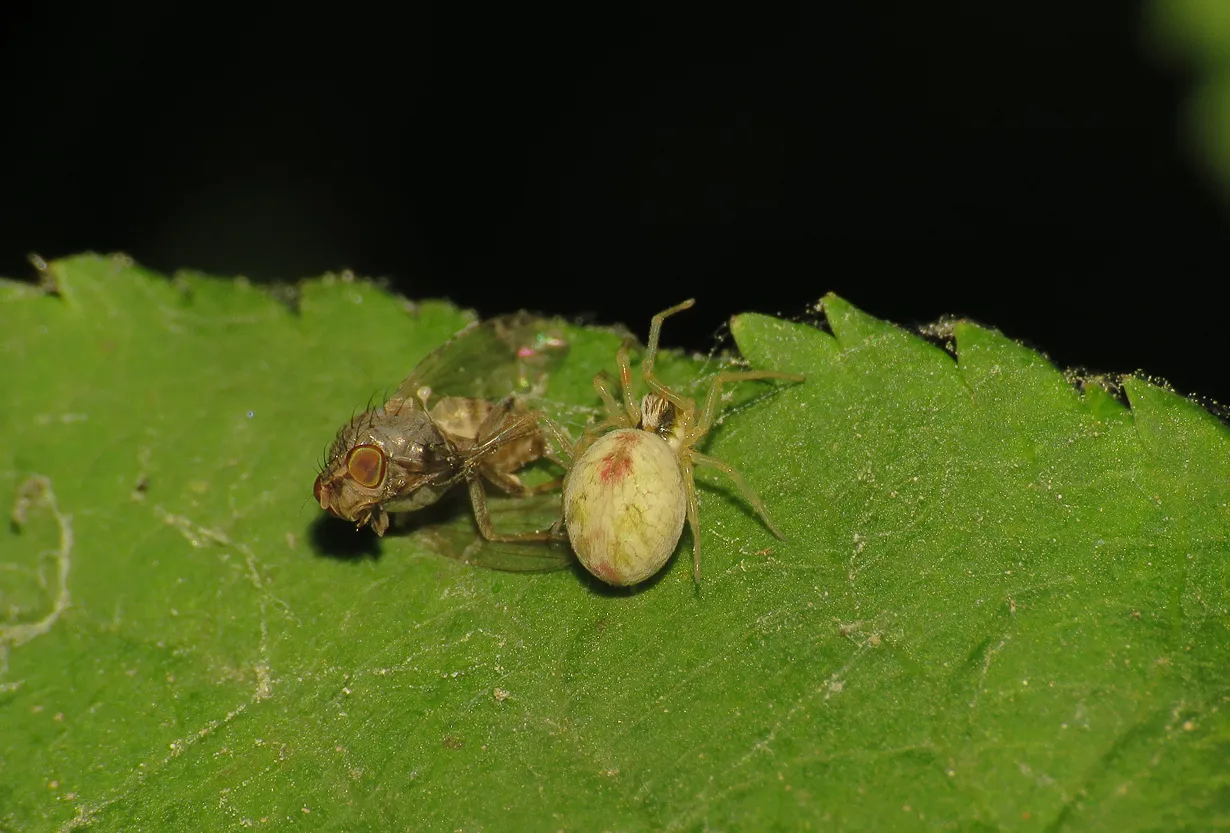
... the spider crawled under the leaf, to the lower surface of that leaf ...
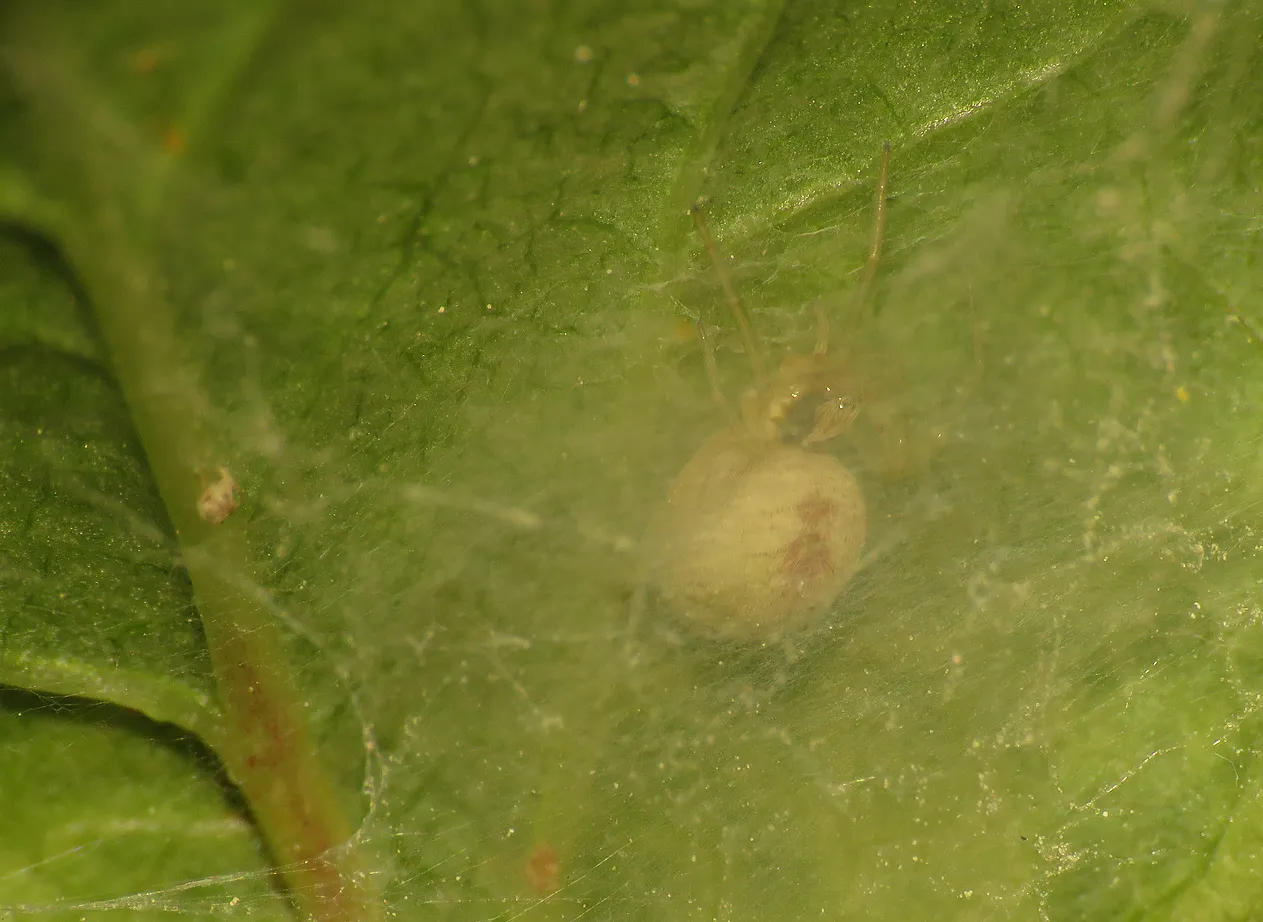
... and entered his silky shelter, to rest well hidden there.
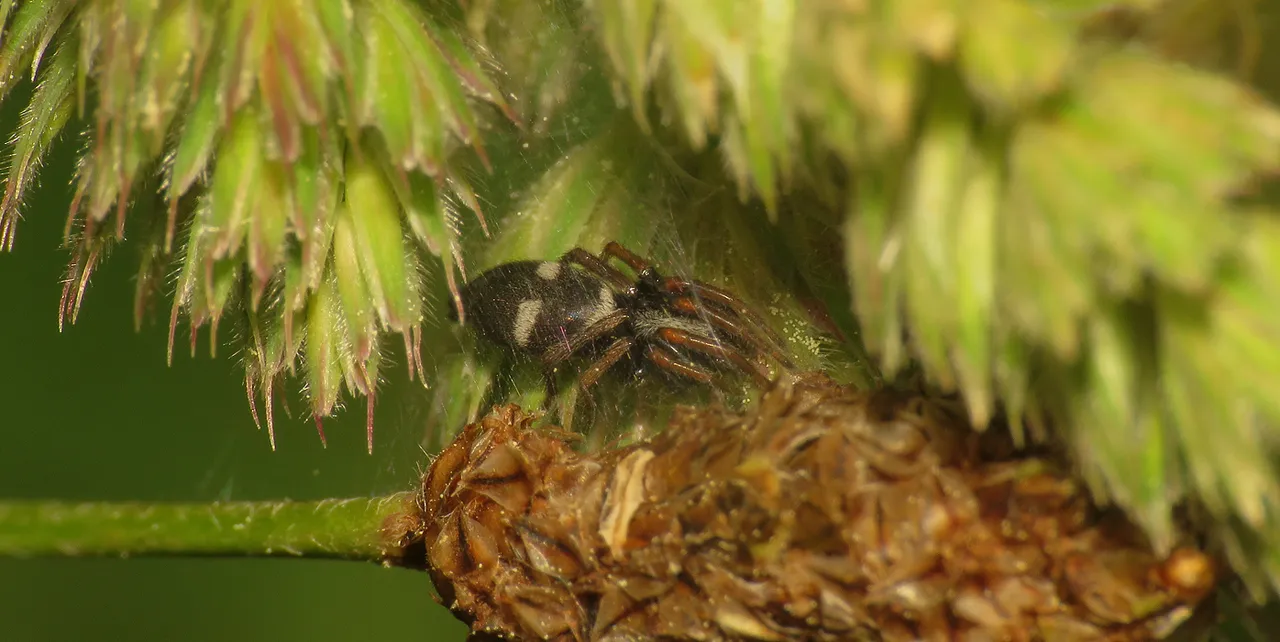
Not far from there I found another interesting spider species, resting behind the loose silky curtain.
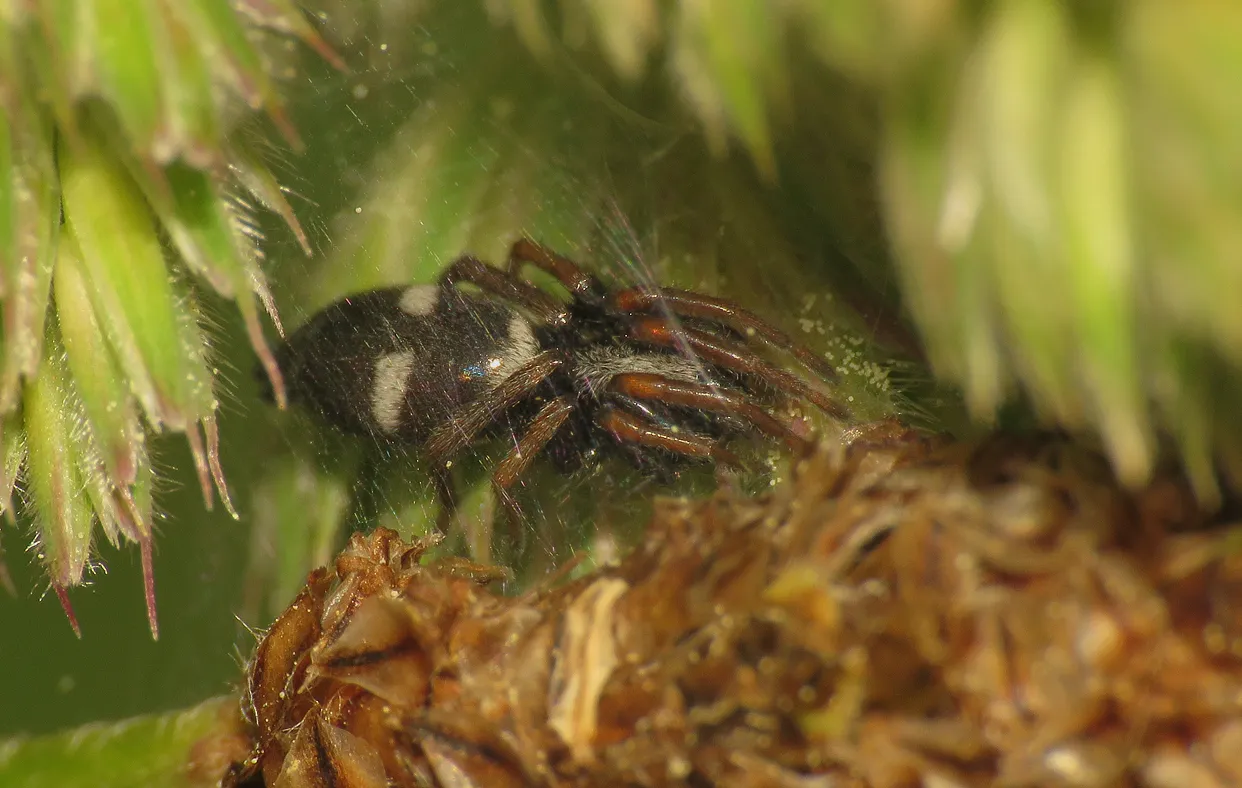
This is the Aphantaulax trifasciata, a ground spider (Gnaphosidae family) species.
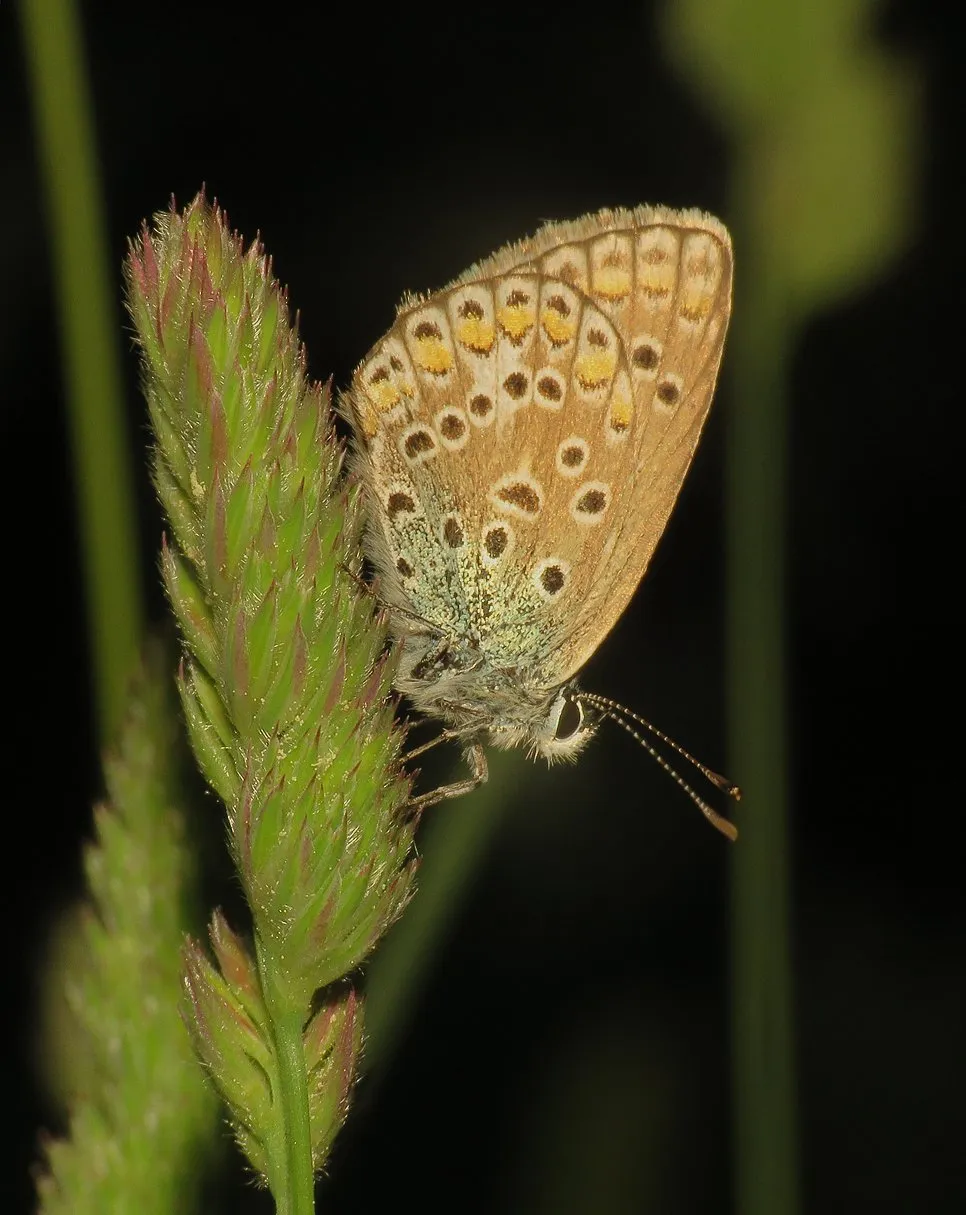
The meadows are filled with life these days, there is an insect or some spider practically on every straw, every leaf or flower ... the small blue butterfly from the Lycaenidae family, I don't know the exact name because quite a few very similar species are present in the area, was resting on the top of the grass ...
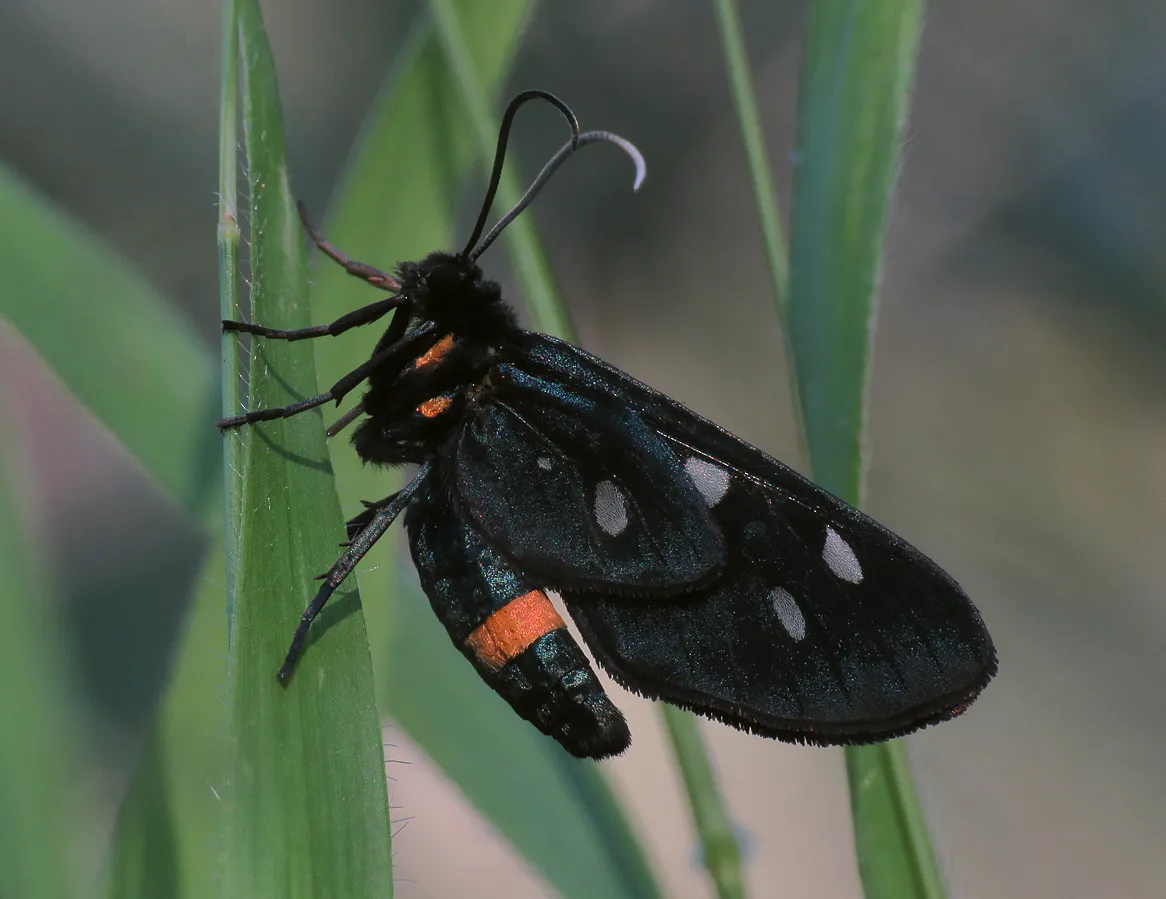
... Amata phegea, a diurnal moth species, was resting lower on the leaves of grass ...
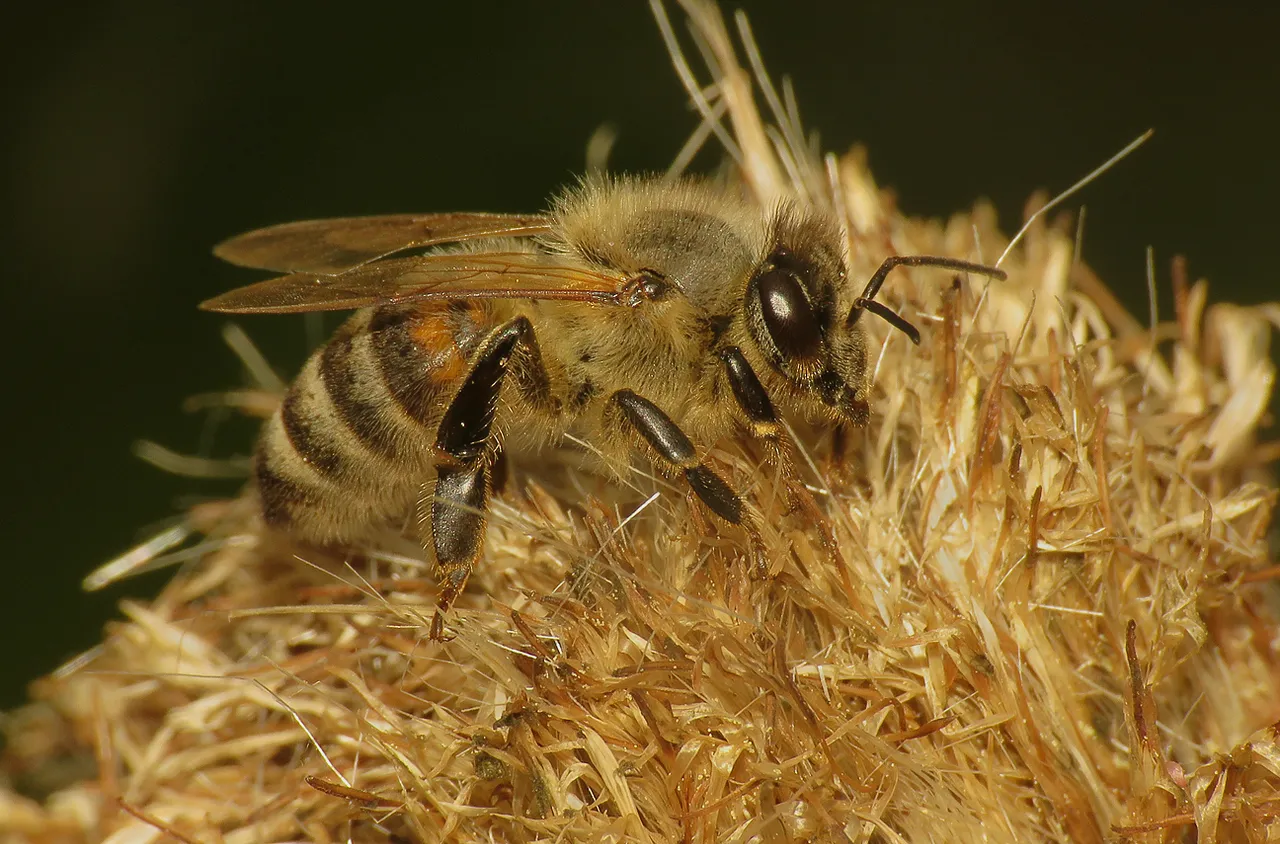
... this European honey bee (Apis mellifera) was photographed on the decaying thistle flower ... and was well camouflaged there, high on the top of the tall and robust plant ...

... while on some large green leaf near the ground ...
... I found and photographed the green nymph of some planthopper ... maybe the Dictyophara europaea planthoper, I'm not sure ... it looks a lot like wingless version of that species.
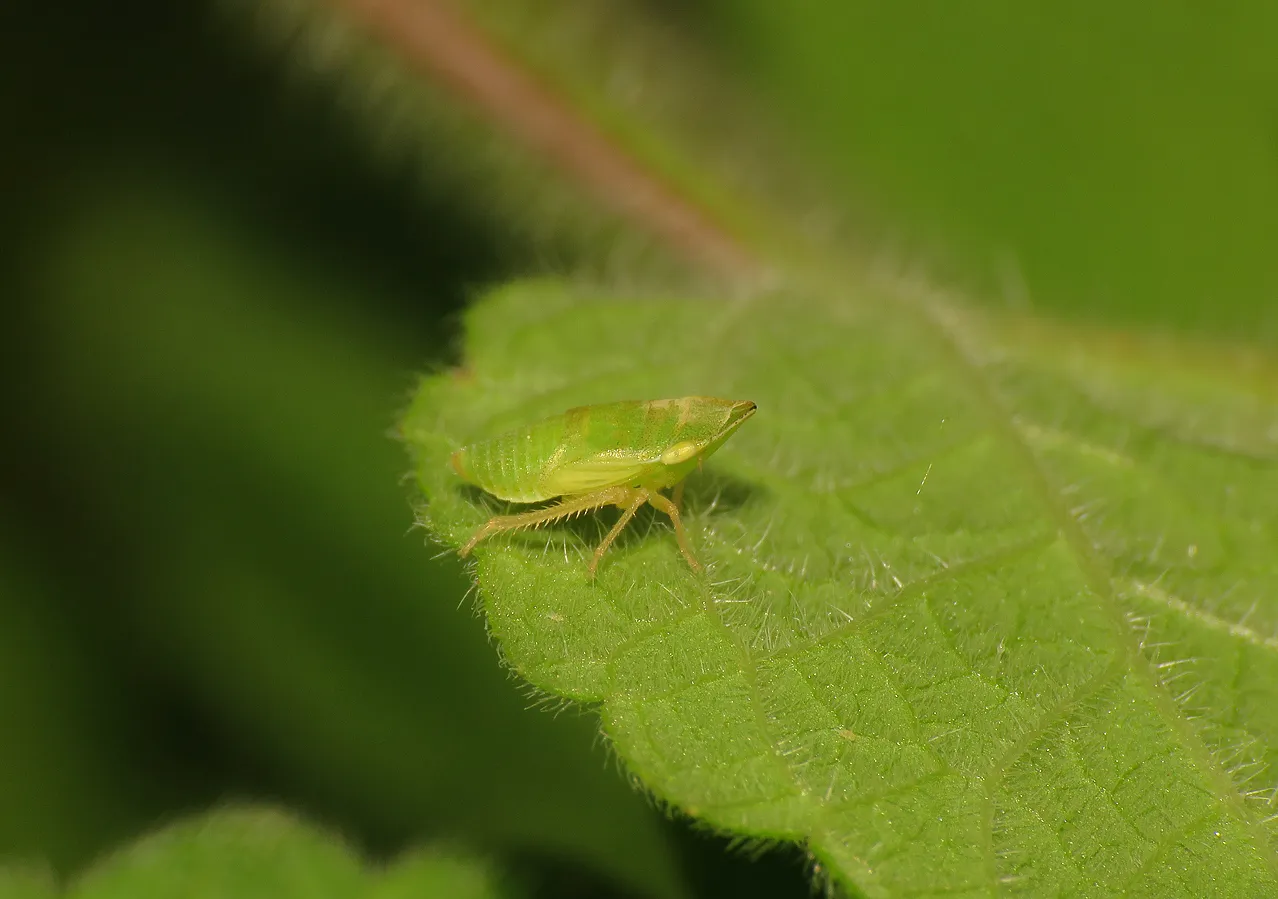
It had a very good camouflage for vivid green surfaces.
On the leaves of the neighboring plant I found a pretty cute, rounded beetle ... the Sphaeroderma rubidum from the Chrysomelidae (leaf beetles) family.
On this triptych you can see plenty of Salvia verbenaca plants and a multitude of their flowers that I photographed along the dusty road surrounded by meadows.
This wingless nymph of the Acrometopa macropoda bush - cricket was also photographed on the vegetation by the road as I was walking back to my car.
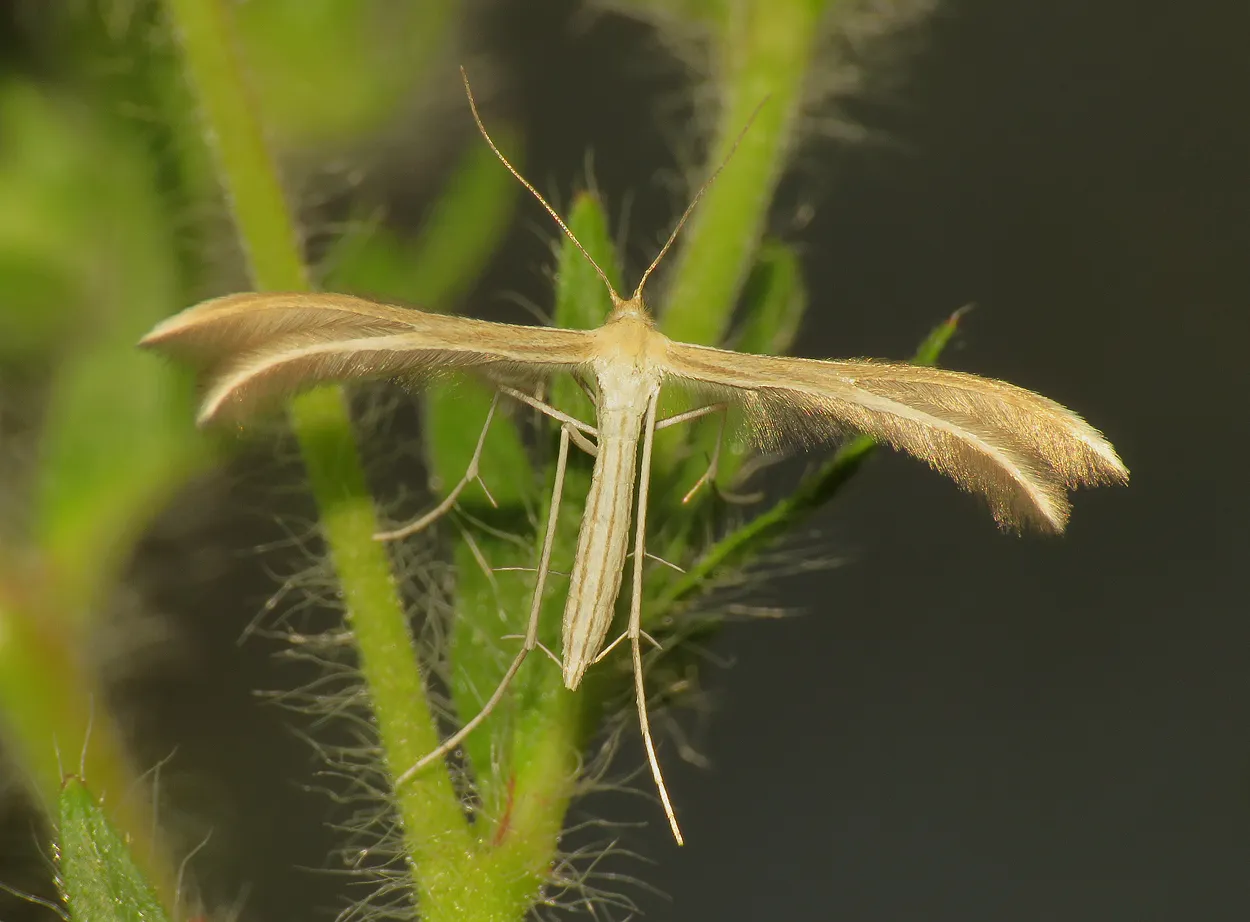
I decided to return home, but that walk to the car ended up being very slow and long because there was always something interesting to photograph along the way ... like this Merrifieldia leucodactyla plume moth ...
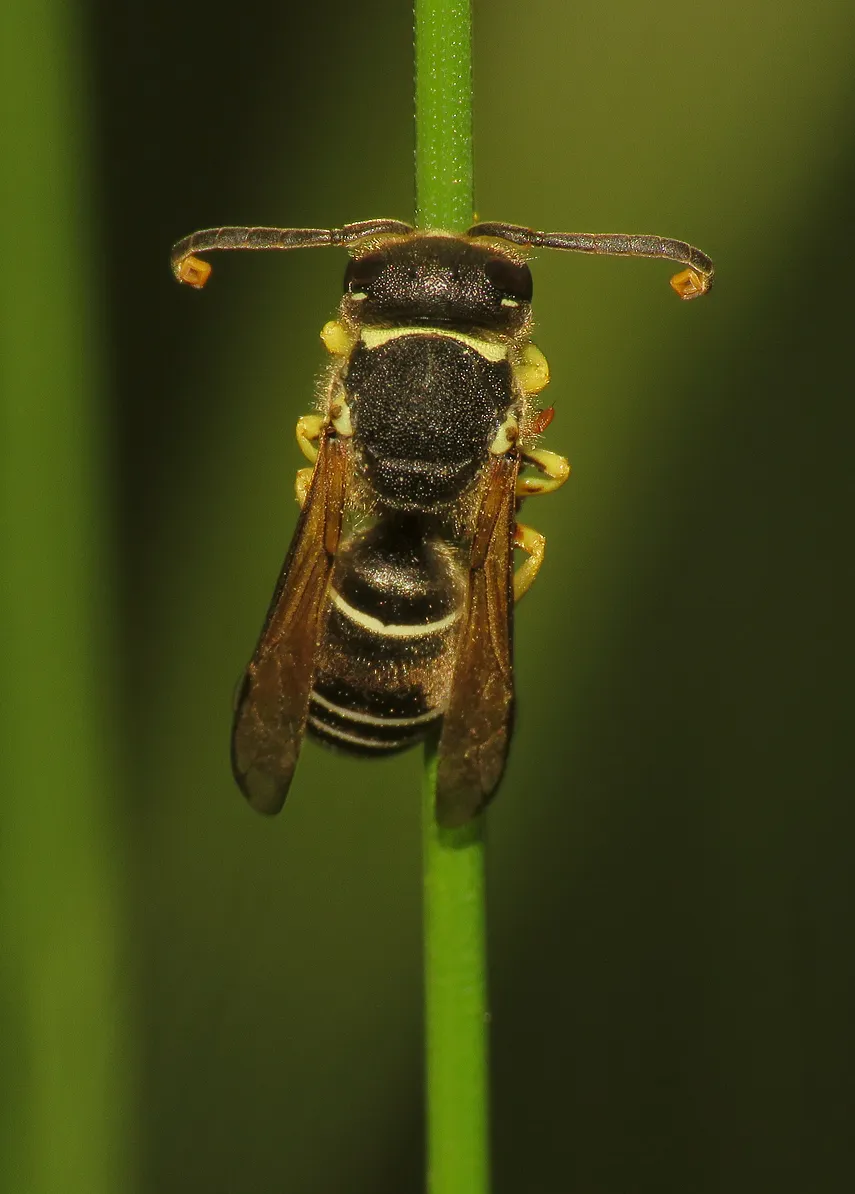
... or this ... this ... well, I don't know what is this exactly ... some kind of wasp ? A nomad bee? Some sawfly species? ... I don't know ...
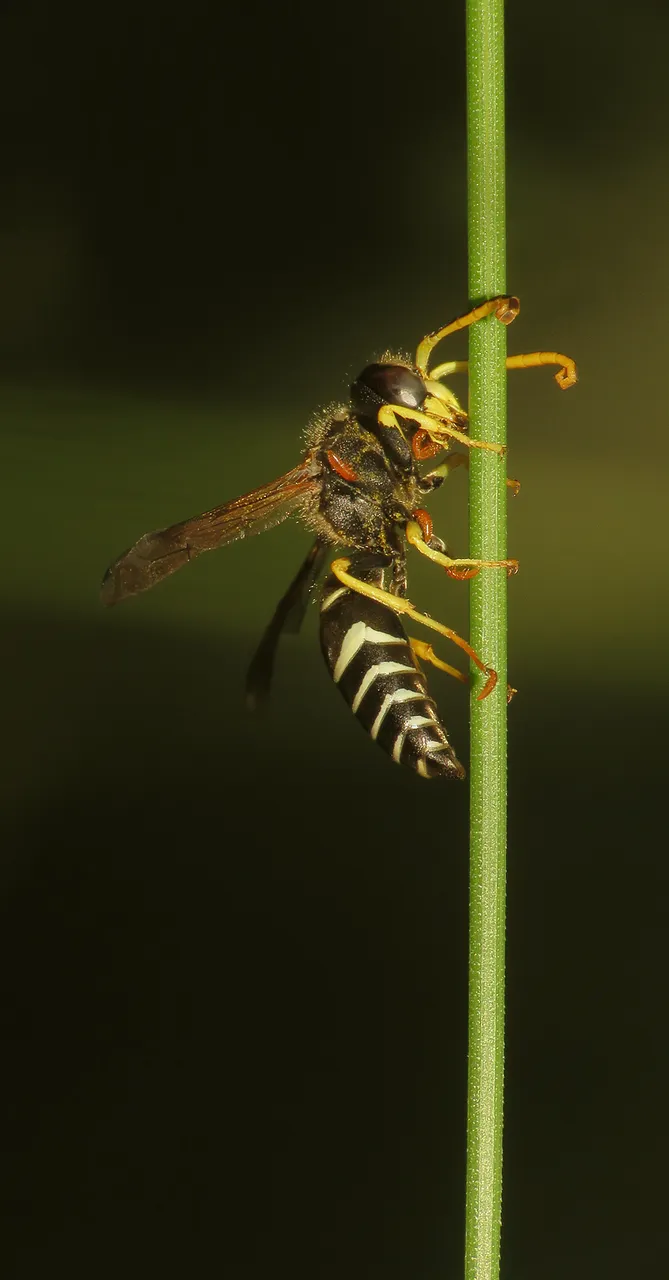
The insect was covered with some minuscule, vivid - orange creatures that looked like rove beetles or some kind of larvae. I didn't notice them while photographing, but only later at home, when I enlarged the picture on PC.
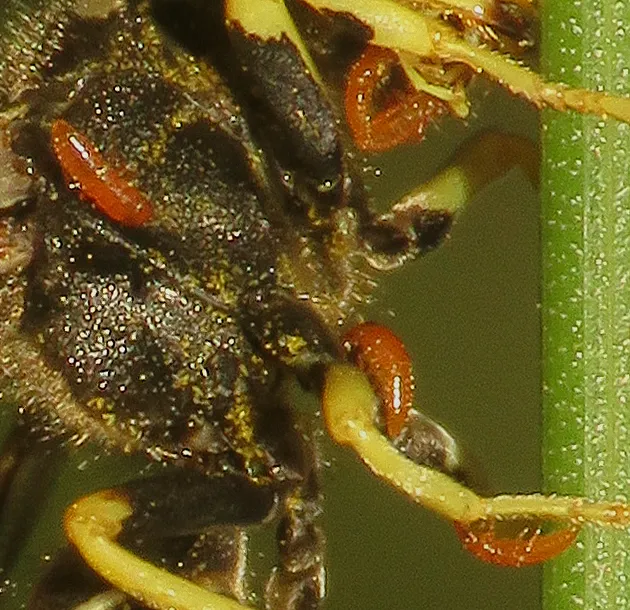
Here you can take a look at the cropped detail. I don't know what are these.
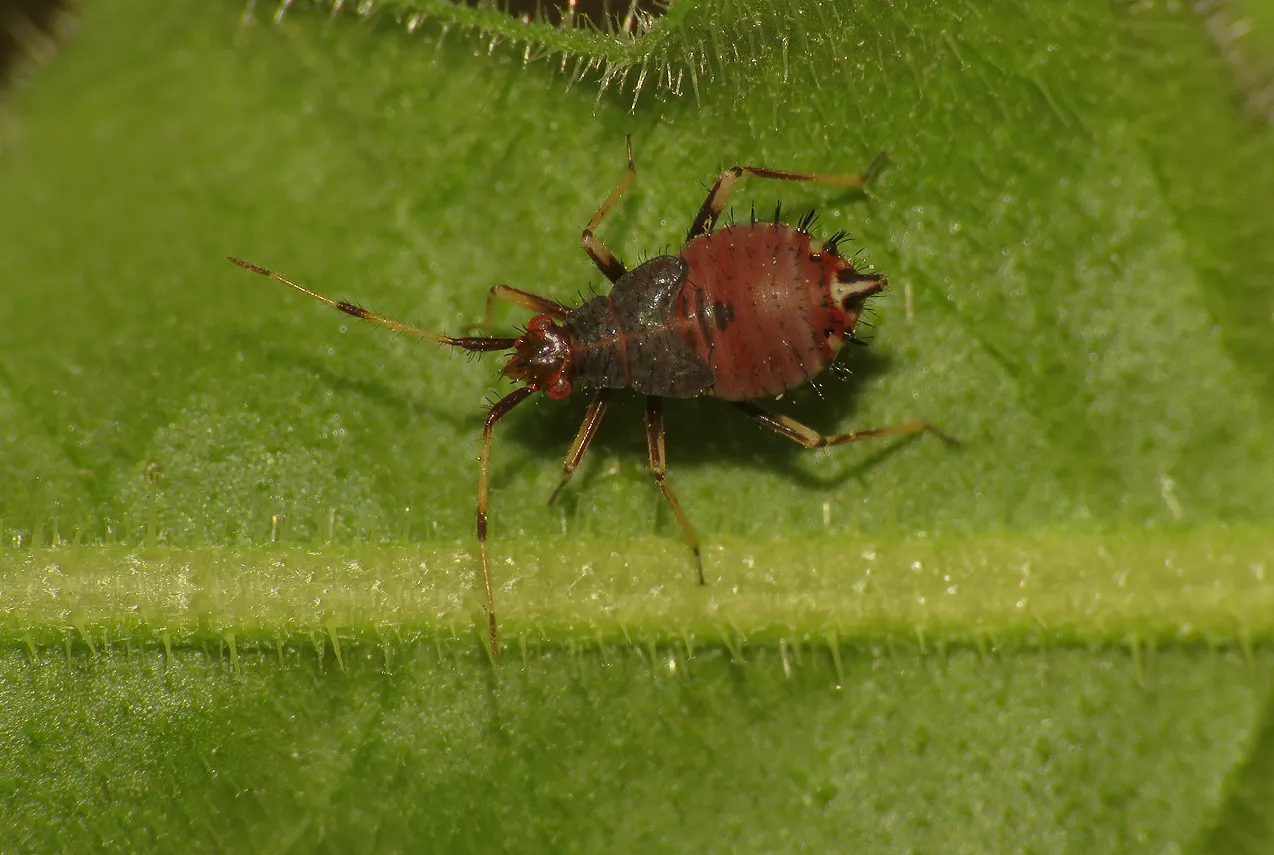
The small nymph on this and the following photograph ...
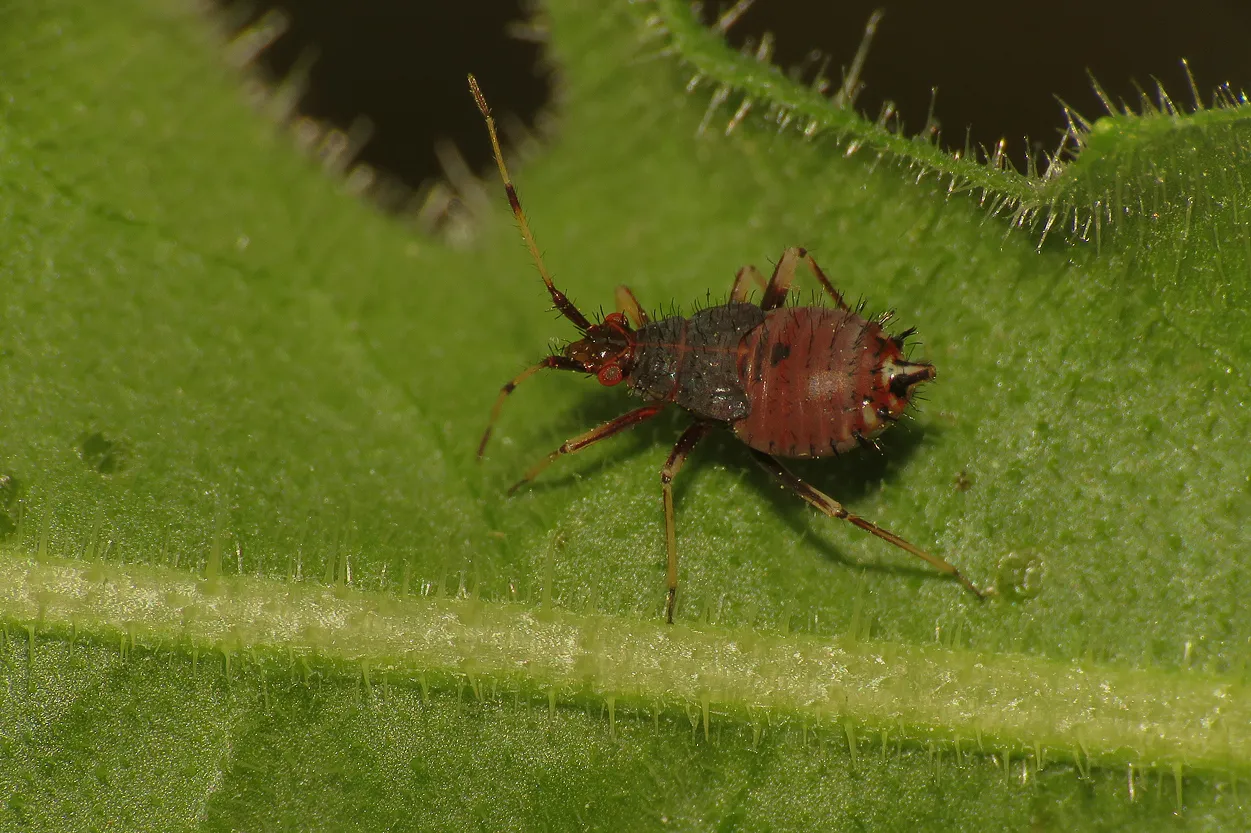
... is the young, wingless version of the Deraeocoris ruber bug from the Miridae family.
When I arrived to the green wall made of intricate growth of thorny shrubs and small trees, near which my car was parked ... and where the open meadow ends ...
... I photographed the Coremacera marginata fly from the Sciomyzidae family. The larvae of this species prey on terrestrial snails - the adults feed on nectar and various sweet liquids.
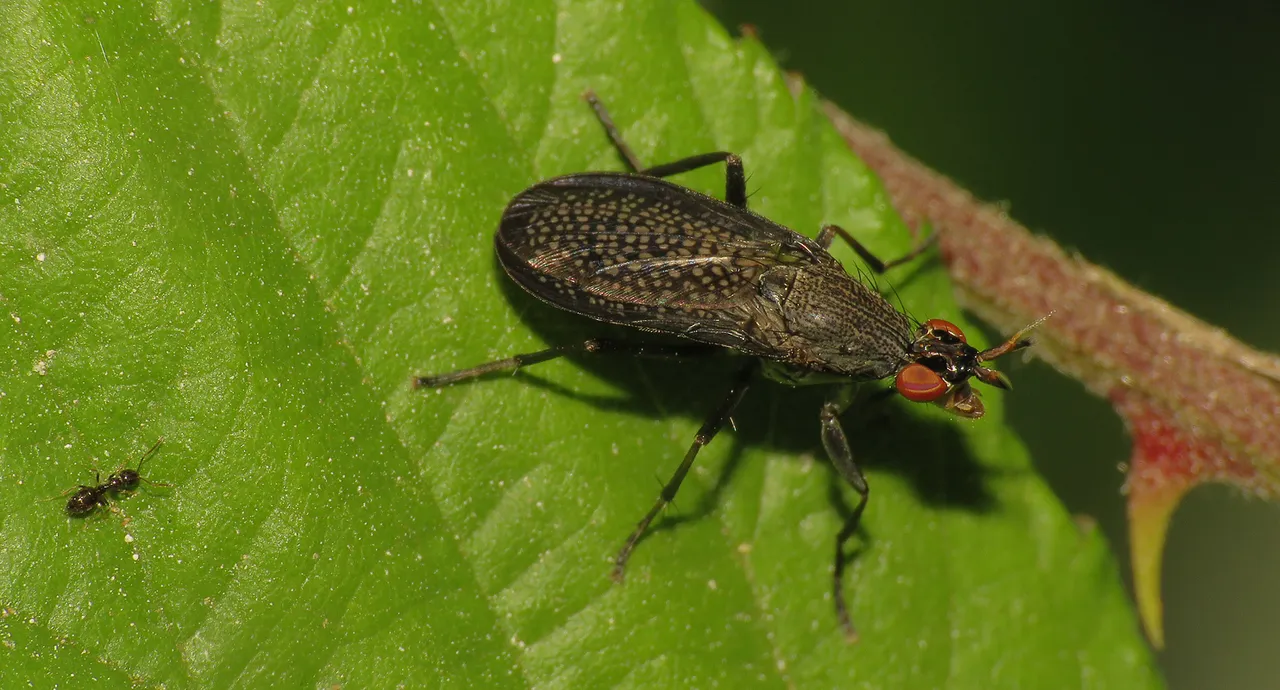
After taking these shots on the leaves of the blackberry shrub, I was driving home ... to eat something and prepare this post.
As always in these posts on HIVE, the photographs are my work ... and as always in this NEWS FROM THE MEADOWS series, they were all taken today.






